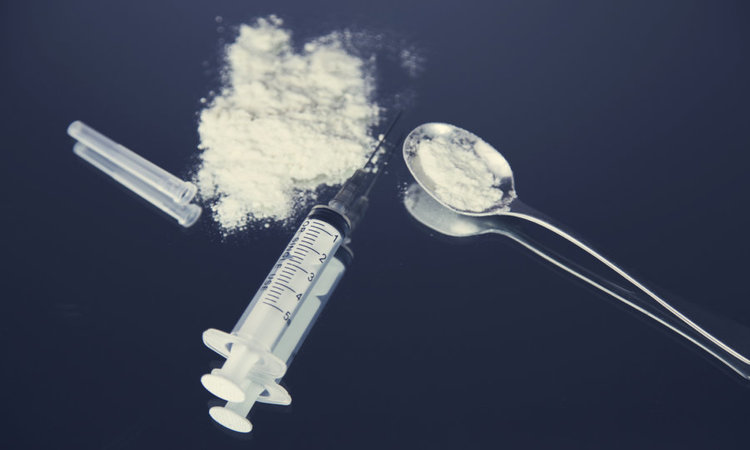
2-4 Hours (half-life) when taken by injection, meaning it takes just a few hours for half of the drug to leave a person’s system. From 11-22 hours, fentanyl is no longer active in the human body.
However, due to its potency, as a prescription drug, fentanyl is usually only found in the form of a transdermal or lozenge. In this case, fentanyl’s half-life is around seven hours and may take up to three days to leave a person’s body.
It is important to note, however, that as fentanyl is processed or broken down in the body, it leaves behind byproducts called metabolites. These remain in the system for much longer and can be detected on some drug tests several days after the last use. Some other factors are:
- Age
- Weight and height
- Body fat and mass
- Genetics
- Food consumption
- Liver functionality
- Metabolic rate
- Dosage amount
- Duration of use
Some Facts About Fentanyl
Fentanyl is a powerful painkiller, and when used In a hospital setting, it is often for the treatment of severe pain and general anesthesia.
As a prescription drug, it is indicated for moderate to severe pain, cancer, or palliative care. As noted above, it is only administered slowly through the skin by a transdermal patch or ingested orally as a lozenge/lollipop.
Most fentanyl found on the street, however, is not diverted from patients or hospitals. Rather, it is manufactured in China or Mexico and illicitly-obtained from dealers or the Internet. Frequently, fentanyl is found laced with heroin, cocaine, and other drugs, most often unbeknownst to the user.
Fentanyl works by increasing dopamine, a feel-good chemical in the brain. It invokes feelings of euphoria and relaxation and can result in complete sedation. Due to this fact, fentanyl, like heroin, has a high potential for addiction, and its potency puts users at a profound risk of overdose and death.
Common street names for fentanyl include china white, dance fever, apache, TNT, goodfella, murder 8, and tango.
Due to its potency and limited use medically, fentanyl dependency is relatively rare, although cases of addiction to prescription fentanyl do occur. However, because it’s so often found in heroin and other drugs, it is frequently abused by users whether they realize it or not.
One startling example was the sudden death of the artist Prince. He reportedly received tablets that were labeled as Vicodin – a prescription painkiller that contains hydrocodone and when used as prescribed is unlikely to result in an overdose.
The contents of the tablet, however, were later shown to be fentanyl, and indeed, the toxicology report from his autopsy later revealed that fentanyl was in his system at the time of his death.
Regardless, symptoms of fentanyl abuse are similar to that of heroin and other powerful opioids. They include, but are not limited to the following:
- Confusion
- Depression and anxiety
- Difficulty walking
- Muscle stiffness and weakness
- Slowed heart rate
- Slow, labored breathing
- Dizziness and fainting
- Shakiness
- Sleepiness
- Slurred speech
- Nausea and vomiting
- Itchiness
Fentanyl Overdose
Currently, fentanyl is responsible for the deaths of thousands of people in the United States each year, and by some estimates, may be involved in half of all overdose deaths nationwide.
According to a recent report from the Centers for Disease Control and Prevention (CDC), the National Forensic Laboratory Information System (NFLIS) estimated that drug submissions that tested positive for fentanyl more than doubled from 2015-2016, increasing from 14,440 to 34,119. This trend continued into 2017, with more than 25,000 reports in the first six months of 2017 alone.
Symptoms of a fentanyl overdose include:
- Confusion
- Dizziness
- Impairments in thinking, speaking or walking
- Paleness
- Blue or purple-colored lips, fingernails, or extremities
- Choking sounds
- Vomiting
- Small pupils
- Seizures
- Low blood pressure
- Slowed heart rate
- Fainting
- Limpness
- Unresponsiveness
- Labored breathing
- Respiratory arrest
- Death
Treatment for Fentanyl Addiction
Treatment for heroin and fentanyl addiction begins with a medical detox that includes opioid replacement therapy and around-the-clock clinical supervision. Detox is closely followed by long-term intensive therapy and counseling at our center.
We offer both inpatient and outpatient treatment, which includes the following services:
- Psychotherapies such as behavioral therapy
- Individual and group therapy
- Individual and family counseling
- Medical support and psychiatric services
- Holistic practices such as yoga, music, and art therapy
- 12-step meetings
We Are Addiction Specialists
Our staff includes addiction specialists and other healthcare providers trained to enact individualized programs that treat the symptoms of addiction and withdrawal.
If you or your loved one is suffering from substance abuse such as meth, please seek help as soon as possible.
Learn more about our treatment options below: